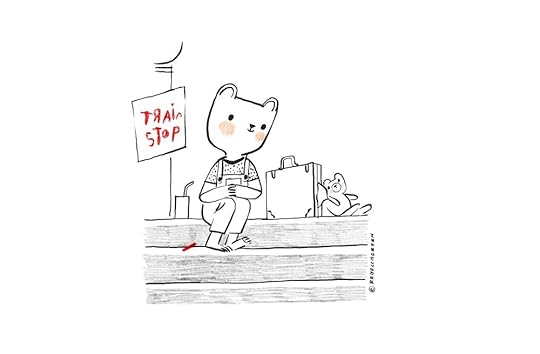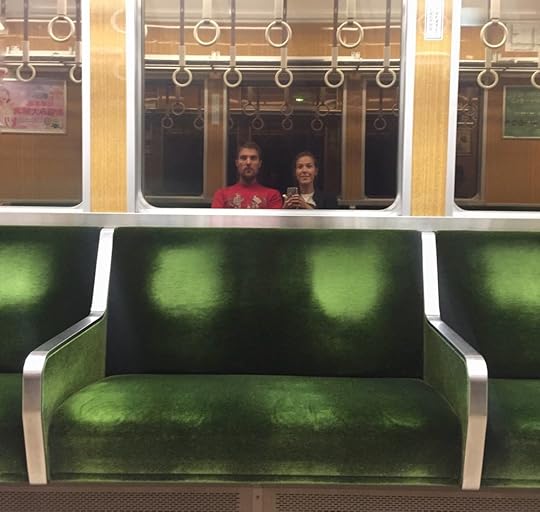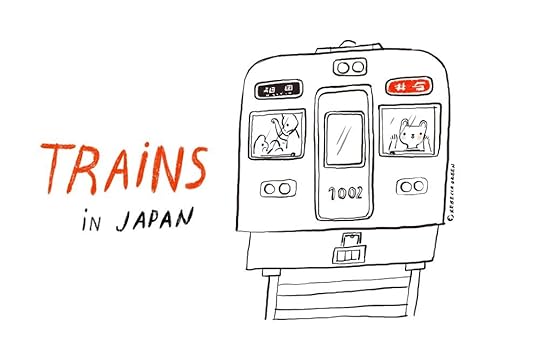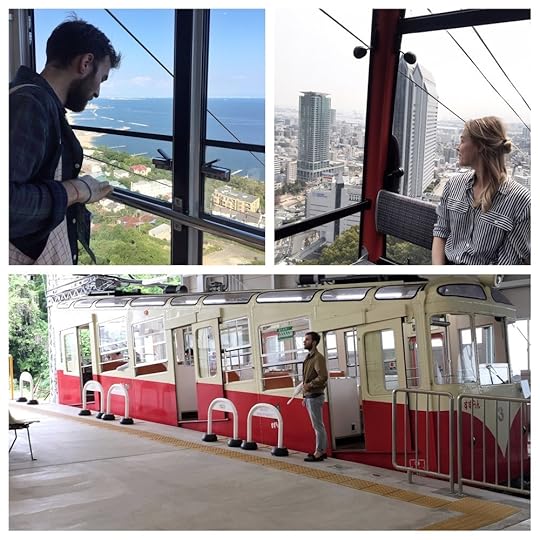JAPAN | PART TWO | TRAINS

Have you ever seen a cassette carrying case? They’re cute little things, like tiny pieces of luggage or business briefcases, but with slots to hold about 30 cassette tapes. When you take the cassettes out and fill your ‘luggage’ with clothes, a ring pop, and a stuffed animal or two, it can really feel like you’re going places. Going where exactly, I never found out, as ‘waiting for the train’ was more fun to me than actually pretending the train arrived. I’d sit for what felt like hours on the top of my stairs - my train station, and happily wait.


As a young adult, however, things shifted and I actually had a lot of anxiety about public transportation. I grew up in a small town where everyone drove and I didn’t take a bus or a train until long into my adulthood. Leading up to our move to Japan, I stayed awake at night playing the worst case scenarios in my head. I was determined that I would take the wrong train and end up in the middle of a rice field 6 hours away without a phone or a way to communicate. To write now seems ridiculous but you know how night time thoughts are.
Of course, the opposite turned out to be true. The trains in Japan are a dream. They’re efficient, clean, quiet, and accessible. I actually dread the thought of coming back to the US and having a car again (though I know we’re very lucky to have one.) Since I’m not well traveled, I won’t begin to compare Japanese public transportation with that of others countries, nor will I dive into the engineering, but I will share with you the things I love about the trains here like…


VELVET SEATS
Since eating and drinking on the streets and on public transit is considered rude here, you’ll be hard pressed to find a crumb or a spill on the train. The seats are basically pristine. Though I’ve seen lots of colors from blue to burgundy to orange, the dark green ones are my favorite. I find them on my local Hankyu Line.
THEY’RE ON TIME
Except for the few instances where the trains were significantly delayed, the trains are always on time. When arriving, I was a little intimidated by the difference between the local and express trains but I got the hang of it quickly. The local trains stop at every station while the semi-express, limited express, rapid express, etc. stop at fewer stops making the trip much faster.
QUIET
Most often, the trains are completely silent. Everyone is on their phone or they read. This is especially welcome during rush hour when people are squeezed in like sardines. Even though the space can get super tight, I’ve never witnessed frustration, terse words or tension. It seems to just be expected that everyone squeezes in and minds to themselves. It’s also quite easy to fall asleep on the trains and often I revert to standing so that I’m not tempted to doze off.

THE SHINKANSEN Of course we can’t have a train post without talking about the Shinkansen, or Bullet Train. The Shinkansen is a network of high-speed railways, connecting major cities, but also acting as a commuter train in large metropolitan areas (such as Tokyo). I’ve taken the Shinkansen from Osaka to Hiroshima, (which I highly recommend. Visiting the Hiroshima Peace Memorial Museum is absolutely heartbreaking and informative. You can also take a ferry to Miyajima Island, where you can hang out with deer, eat maple cookies and see the floating Great Torii Gate of Itsukushima Shrine). I’ve also taken the Shinkansen to Tokyo a couple of times and it’s a breeze. Unlike local trains, it’s acceptable to eat on the Shinkansen, so there are plenty of places to buy bento boxes and snacks in the train station!

A pickled plum onigiri on my last Shinkansen ride!
CABLE CARS An expert might tell me these aren’t ‘trains’ but I don’t care! I still love them. On many of the mountains here, you can hike to the top, or you can take a cable car. We’ve taken them in Ikoma, Mt. Rokko, Kurama-Dera, and Nunobiki Herb Garden. They’re a great way to get a little adventure in and save time hiking. We usually take the cars up and then walk down if we’re short on time.

Some cable car adventures!
I’m beyond thankful to have spent time here learning and navigating these systems of transportation. I sort of feel like If I can make sense of the rail lines in Tokyo, I can probably figure out other systems too. Noticing and honoring this sense of independence and navigation is just all kinds of freeing as you can imagine.
And that’s it for TRAINS! If you want to learn from a source that actually knows about trains (aka not Rebecca Green) I found some sites with more info:
http://factsanddetails.com/japan/cat23/sub153/item853.html
https://en.wikipedia.org/wiki/History_of_rail_transport_in_Japan
https://www.britannica.com/place/Japan/Railways
Next week I’m sharing what I love about the Architecture!
** And since I actually don’t like planning and I don’t want these to feel tour-guidey, I’ve decided to make the last three posts heavily visual, as though you’re peeking into my journal. It’s a great motivator for me to draw the things I’m seeing daily and be able to share my findings with you.
xoxox, Becca
Rebecca Green's Blog
- Rebecca Green's profile
- 80 followers



